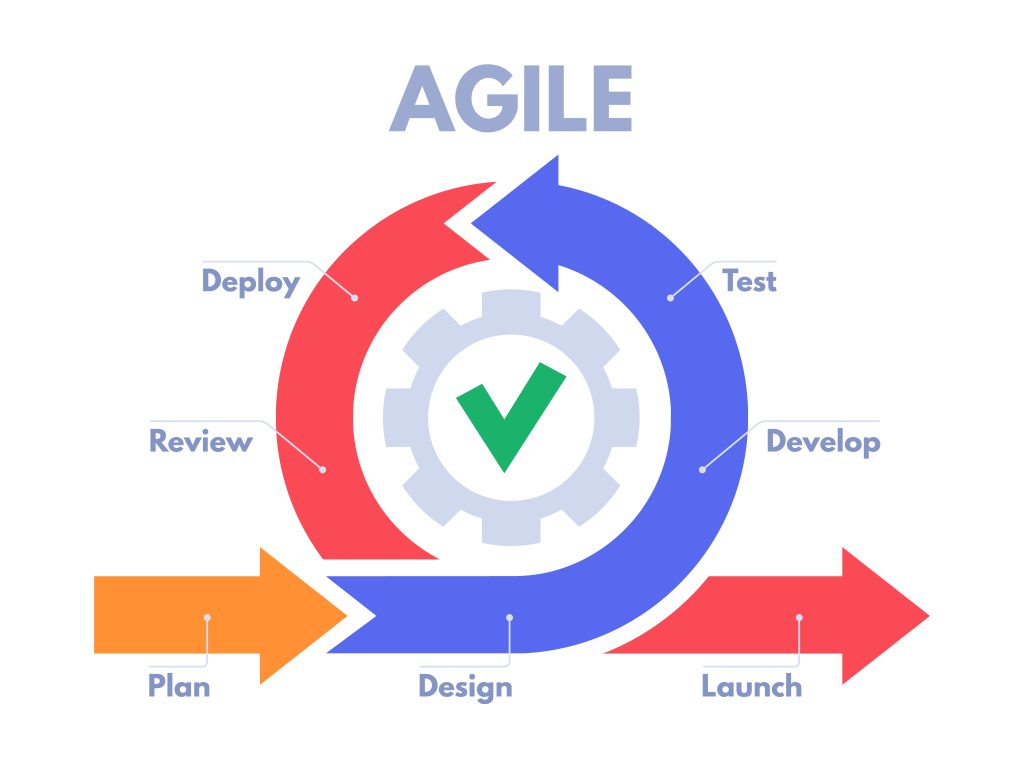
Introduction
Agile development methodologies have transformed the landscape of software engineering, emphasizing adaptability, collaboration, and continuous improvement. Within this framework, the role of Quality Assurance (QA) is paramount, ensuring the delivery of high-quality products in a fast-paced environment. Unlike traditional waterfall approaches, Agile requires testers to adopt a proactive and dynamic mindset, aligning with Agile principles and contributing effectively to the development process. This comprehensive guide outlines the key responsibilities and strategies for testers in Agile projects, focusing on maximizing efficiency and quality throughout the software development lifecycle.

Key Responsibilities and Strategies for Testers in Agile Projects

1.Embrace Agile Principles:
Agile isn’t just about following a set of practices; it’s about adopting a mindset. Internalize the values and principles outlined in the Agile Manifesto, which prioritize individuals and interactions, responding to change, and customer collaboration over rigid processes and plans. Understanding these principles will guide testers in their approach and interactions within the Agile team.
2.Active Participation in Planning:
Testers should involve themselves in all stages of the Agile process, starting with sprint planning. Collaborating with the development team helps testers understand user stories, acceptance criteria, and potential edge cases. Their insights during planning sessions can aid in identifying testing challenges early on, contributing to smoother project execution.
3.Prioritize Testing Activities:
Agile projects operate on short iterations or sprints, requiring testers to prioritize testing activities based on sprint goals and user story priorities. Focusing on critical functionalities and areas prone to defects is crucial. Utilizing risk-based testing enables testers to allocate resources efficiently and effectively.
4.Implement Test Automation:
Automation is integral to achieving the speed and efficiency demanded by Agile development. Testers should identify repetitive and high-impact test cases suitable for automation. Integrating automated tests into the Continuous Integration/Continuous Deployment (CI/CD) pipeline provides rapid feedback on code changes, facilitating faster iterations.
5.Adopt Exploratory Testing:
While automated tests offer coverage for predictable scenarios, exploratory testing is essential for uncovering unexpected defects and usability issues. Testers should leverage their creativity and domain knowledge to explore the application from various perspectives. Documenting findings and sharing them with the team enhances overall product quality.
6.Foster Continuous Collaboration:
Communication and collaboration are fundamental in Agile environments. Testers should actively participate in daily stand-up meetings, sprint reviews, and retrospective sessions. Providing timely feedback on product quality and discussing testing challenges or bottlenecks fosters a collaborative environment conducive to success.
7.Emphasize Continuous Improvement:
Agile promotes a culture of continuous improvement. Testers should reflect on testing processes and practices after each sprint, identifying areas for enhancement such as improving test coverage, refining automation scripts, or streamlining defect management. Encouraging knowledge sharing and learning within the team is vital.
8.Stay Flexible and Adaptive:
Agile projects are characterized by changing requirements and priorities. Testers must be prepared to adapt to evolving circumstances and embrace change positively. Flexibility in testing strategies and approaches enables testers to respond effectively to shifting project dynamics.
9.Ensure Transparency and Accountability:
Transparency is essential for building trust within the Agile team. Testers should maintain clear and detailed test documentation, including test plans, test cases, and test reports. Providing visibility into testing progress, findings, and any blockers that may impact the project timeline promotes accountability.
10.Celebrate Successes and Learn from Failures:
Agile encourages celebrating achievements and learning from failures. Testers should acknowledge team contributions and recognize successful releases. Simultaneously, viewing defects and setbacks as learning opportunities helps prevent recurrence in future sprints.
Conclusion:
In conclusion, testing in Agile projects necessitates a proactive and collaborative approach. By embracing Agile principles, prioritizing testing activities, leveraging automation and exploratory testing, fostering continuous collaboration, emphasizing continuous improvement, staying flexible and adaptive, ensuring transparency and accountability, and celebrating successes while learning from failures, testers can effectively contribute to the success of Agile initiatives and deliver high-quality software products. Remember, Agile is not just a methodology; it’s a journey of continuous adaptation and improvement.
